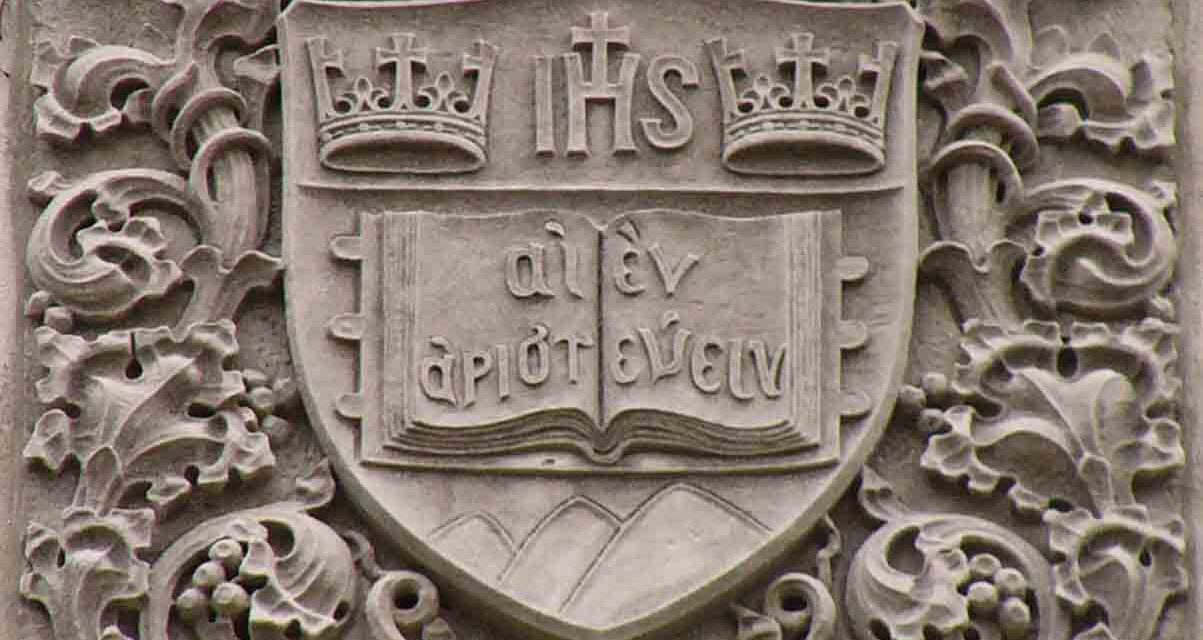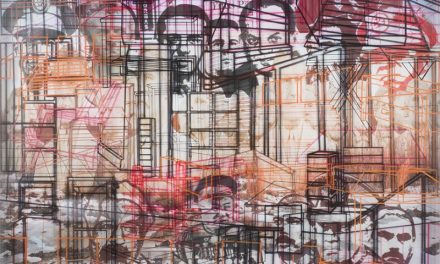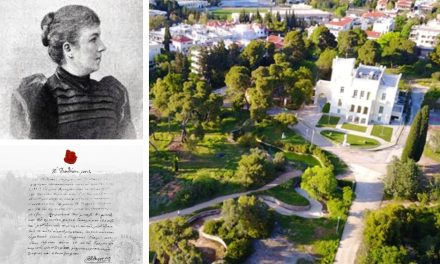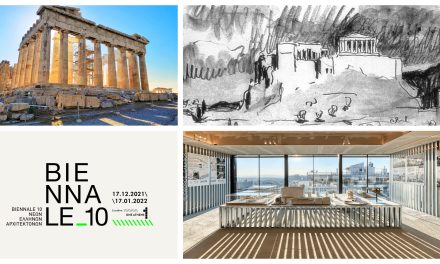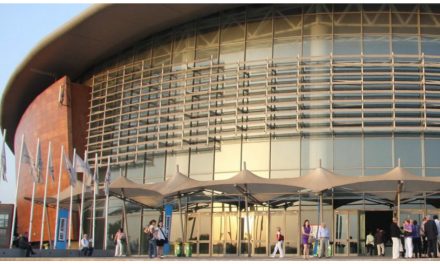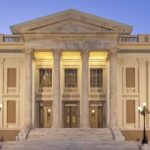As it is known, the Ancient Greek and Roman civilizations have formed the foundation stone for Western culture; hence, Greek and Latin were for centuries an integral part of formal education in the West. Greek and Latin philosophers, orators, poets and tragedians were extensively studied, analyzed and, of course, liberally quoted by writers, artists and thinkers.
It should thus come as no surprise that Greek and Latin quotes are often used in the official insignia of various institutions and organizations, and used in inscriptions on public buildings, especially schools and universities. Let us not forget, after all, that fraternities and sororities in North American colleges predominantly use Greek letters for their names, which is why they are also referred to as Greek life.
Here follows a brief list of some prominent examples of Greek inscriptions in public buildings worldwide; many more can be spotted elsewhere, on large and small-scale structures.
Universities, schools and libraries
The University of Salamanca (Spain), founded in 1218 by King Alfonso IX, is the third oldest university in the world in continuous operation. In the plateresque façade of its main entrance, above a relief portrait of the “Catholic Monarchs” –Ferdinand and Isabella– is an inscription reading: ΟΙ ΒΑΣΙΛΕΙΣ ΤΗ ΕΓΚΥΚΛΟΠΑΙΔΕΙΑ· ΑΥΤΗ ΤΟΙΣ ΒΑΣΙΛΕΥΣΙ which roughly translates as “The kings [dedicate this] to the Encyclopedia (TN meaning the university), and the Encyclopedia [pays tribute] to the kings”.
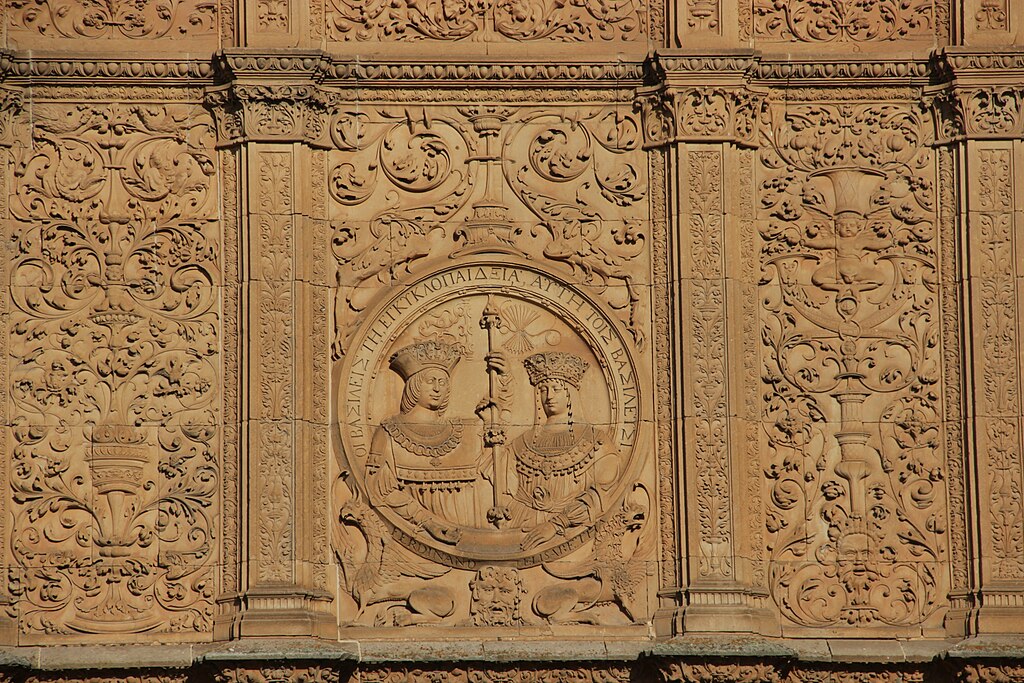
One of the buildings of the University of Edinburgh (Scotland, UK) bears the university’s crest, with the inscription ΔΙΠΛΟΥΝ ΟΡΩΣΙΝ ΟΙ ΜΑΘΟΝΤΕΣ ΓΡΑΜΜΑΤΑ, “those who have learned the letters see twice as much”, a saying attributed to Pythagoras.
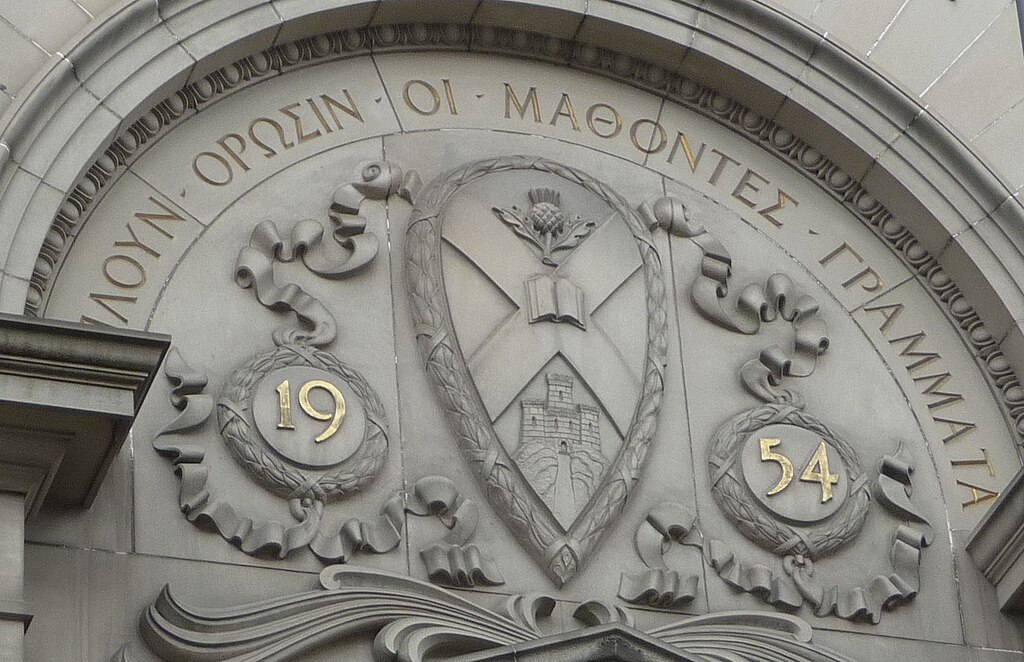
In the vestibule of the Library of Heidelberg University (Germany), we find two mosaics with Greek inscriptions, on the central wall between the staircases. The one on the left reads: Η ΣΟΦΙΑΣ ΠΗΓΗ ΔΙΑ ΒΙΒΛΙΩΝ ΡΕΕΙ “The fountain of wisdom flows through books”, a phrase which is said to have been in the Library of Alexandria; the one on the right says: ΤΟ ΓΡΑΜΜΑ ΑΠΟΚΤΕΙΝΕΙ, ΤΟ ΔΕ ΠΝΕΥΜΑ ΖΩΟΠΟΙΕΙ “For the letter kills, but the spirit gives life”, a quote from Paul the Apostle’s Second Epistle to the Corinthians (verse 3, 6).
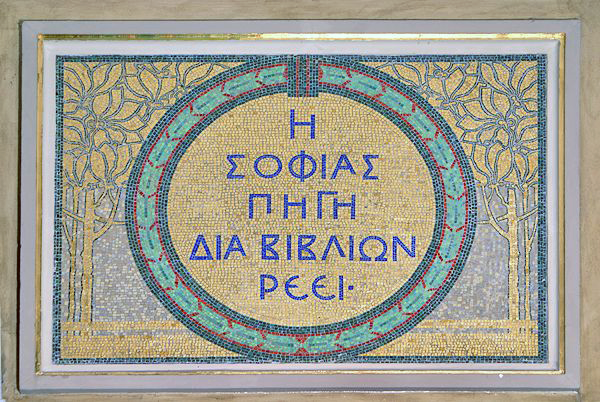
The Ancient Greek phrase “αἰὲν ἀριστεύειν”, usually translated as “ever to excel” has been used as motto by a number of educational institutions, such as universities, colleges and schools. These include Boston college (USA), the University of St Andrews (Scotland, UK), Caistor Grammar School (England), the Edinburgh Academy (Scotland, UK) and Kelvinside Academy (Glasgow, Scotland, UK). The quote can be found, written in Greek, on various parts of these buildings (e.g. see intro image: Engraving on the East side of Bapst library, Boston college [by John P. Workman, Jr. via Wikimedia Commons]).
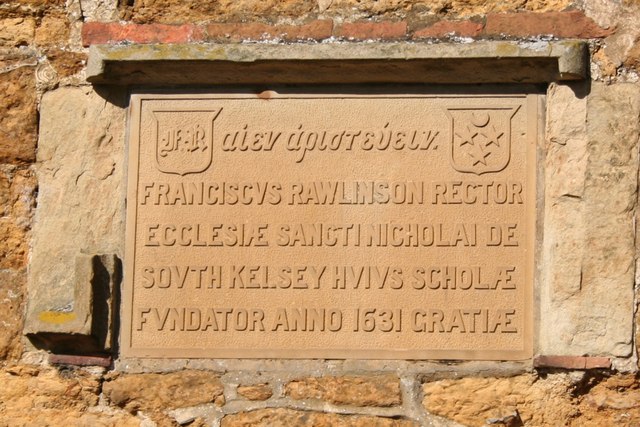
The phrase is taken from Homer’s Iliad, where one of the heroes, Glaucus, claims that his father sent him to fight in Troy “with strict instructions: Ever to excel, to do better than others, and not bring shame to (his) forebearers”. This entire quote can be found at the main entrance of Berthold-Gymnasium in Freiburg, Germany, in a relief created by Nikolaus Röslmeir, which depicts Homer with three young men listening to him.
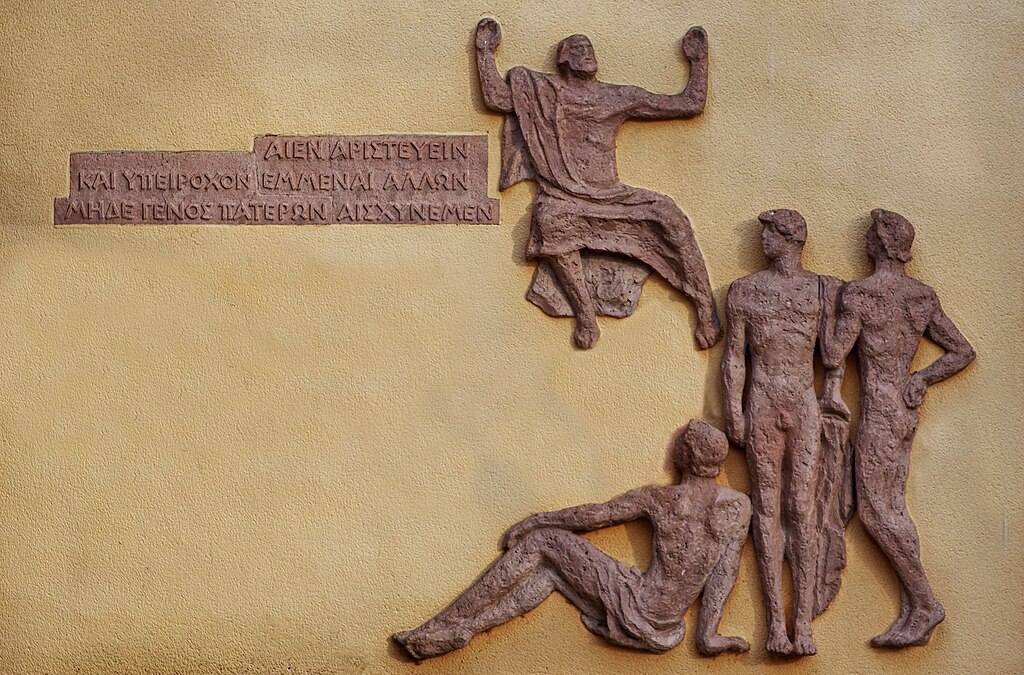
Τhe old building of the University of Malta in Valletta was originally constructed in 1595; its rear entrance was opened in 1824 in the neoclassical style. The lintel –which supports a representation of the Royal coat of arms of the United Kingdom– bears the inscription ΠΡΟΠΥΛΑΙΟΝ ΤΗΣ ΤΙΜΗΣ Η ΜΑΘΗΣΙΣ, meaning “learning is the gateway to distinction”.
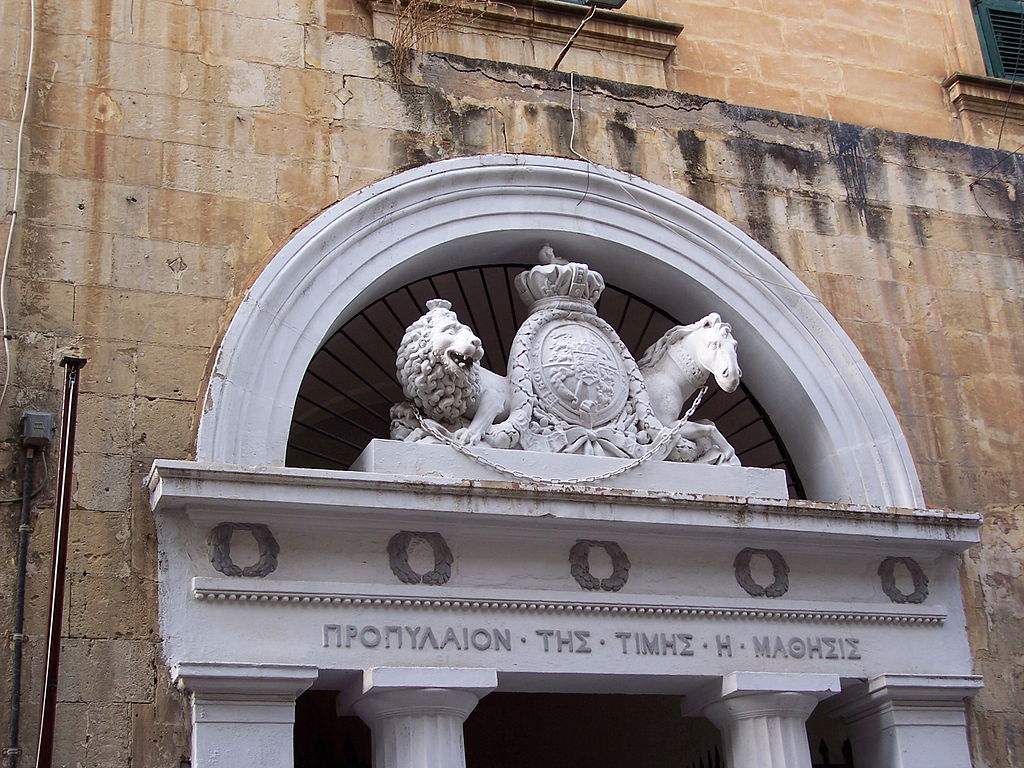
The Edinburgh Academy is a private day school in Edinburgh (Scotland, UK), which was opened in 1824 to promote classical learning. The lintel of the front entrance to the original Edinburgh Academy building bears the inscription Η ΠΑΙΔΕΙΑ ΚΑΙ ΤΗΣ ΣΟΦΙΑΣ ΚΑΙ ΤΗΣ ΑΡΕΤΗΣ ΜΗΤΗΡ, which means “Education is the mother of both wisdom and virtue”.
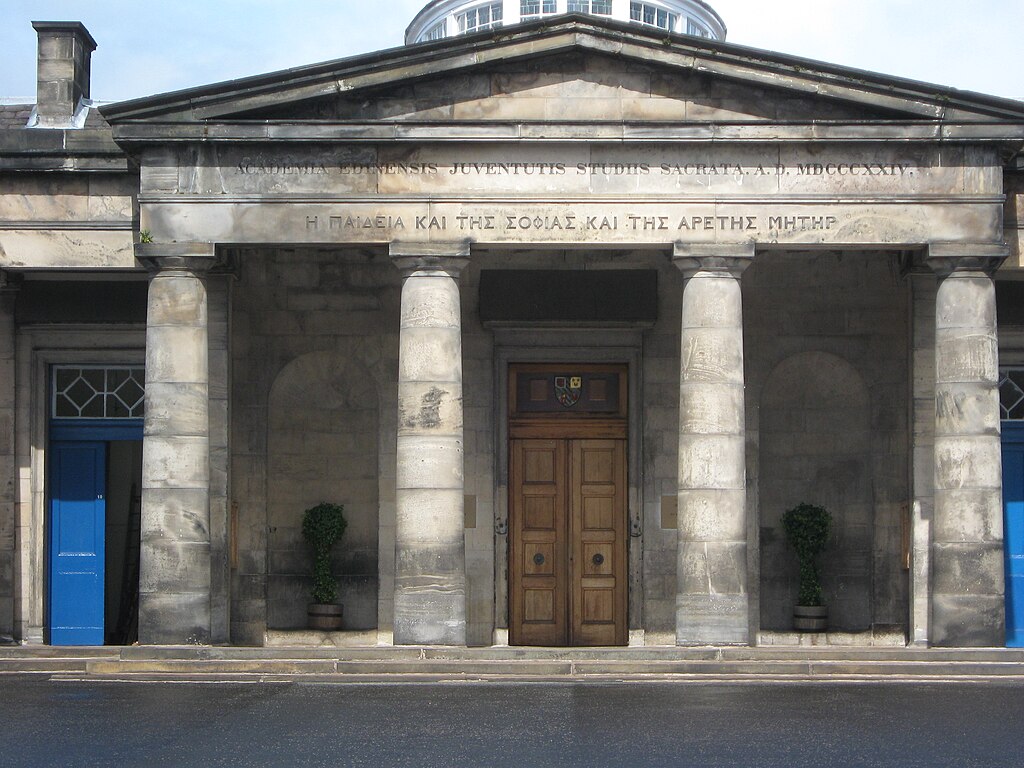
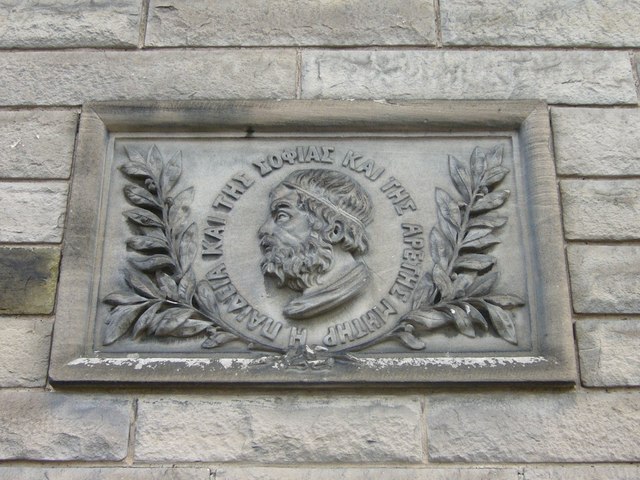
The Abbey of Saint Gall (St. Gallen, Switzerland) is a dissolved abbey and UNESCO World Heritage Site. The library of the Abbey is one of the oldest monastic libraries in the world. The library hall was constructed in the 18th century in a Rococo style. Above the entrance door, there is the inscription ΨΥΧΗΣ ΙΑΤΡΕΙΟΝ which translates as “healing place for the soul”, based on an inscription at the Library of Ramesses II.
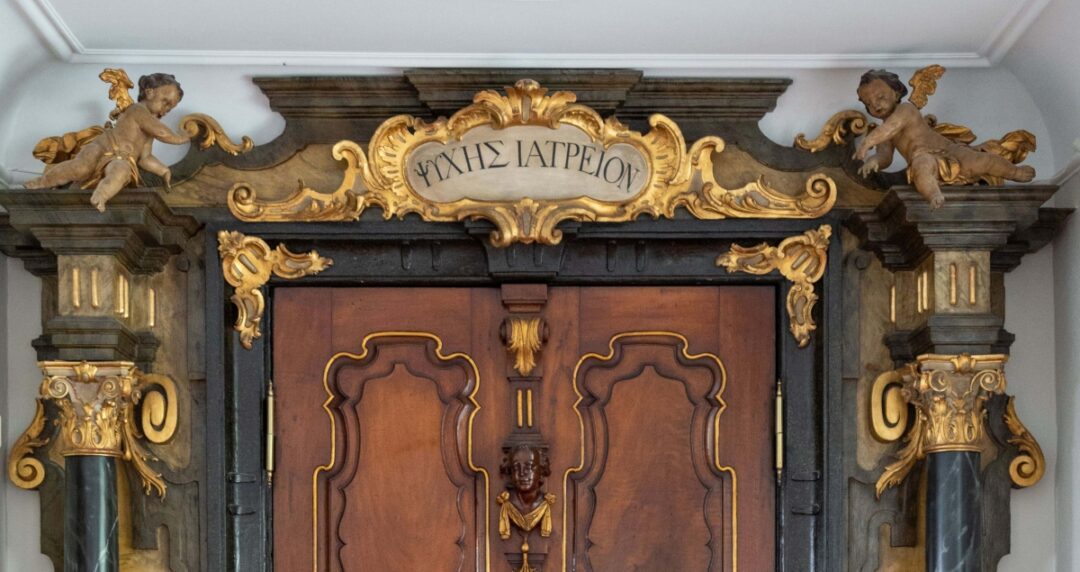
The Harvey Cushing and John Hay Whitney Medical Library is the central library of the Yale School of Medicine, built in 1941. The inscription above the entrance reads ΛΑΜΠΑΔΙΑ ΕΧΟΝΤΕΣ ΔΙΑΔΩΣΟΥΣΙΝ ΑΛΛΗΛΟΙΣ, meaning “carrying torches they will pass them to one another”. The phrase is taken from Plato’s Republic, from a passage where a relay race of horse riders carrying torches is described.
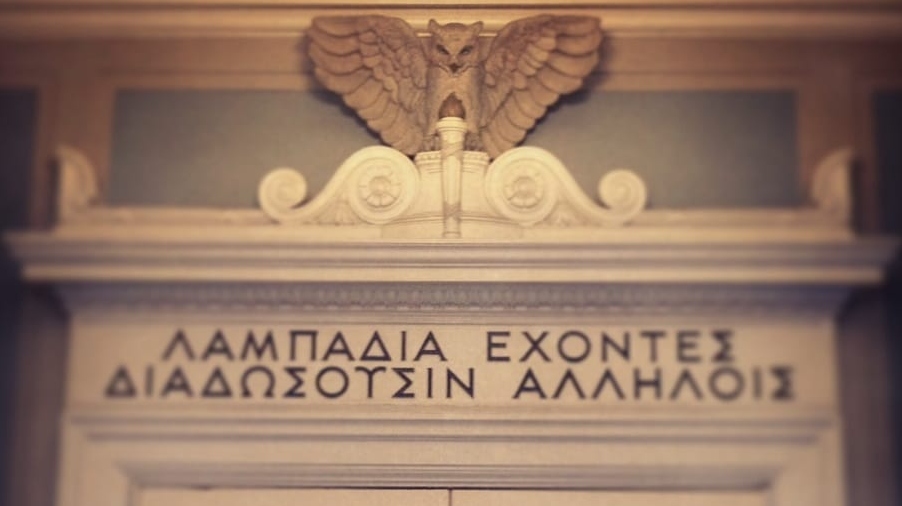
Northwestern University is a private research university in Illinois (USA), established in 1851. The entrance to the Levy Mayer Hall of the Pritzker School of Law bears a relief of the university’s seal, depicting an open book with the university’s motto Ὁ Λόγος πλήρης χάριτος καὶ ἀληθείας “The Word full of grace and truth”, taken from the first chapter of the Gospel of John in the New Testament.
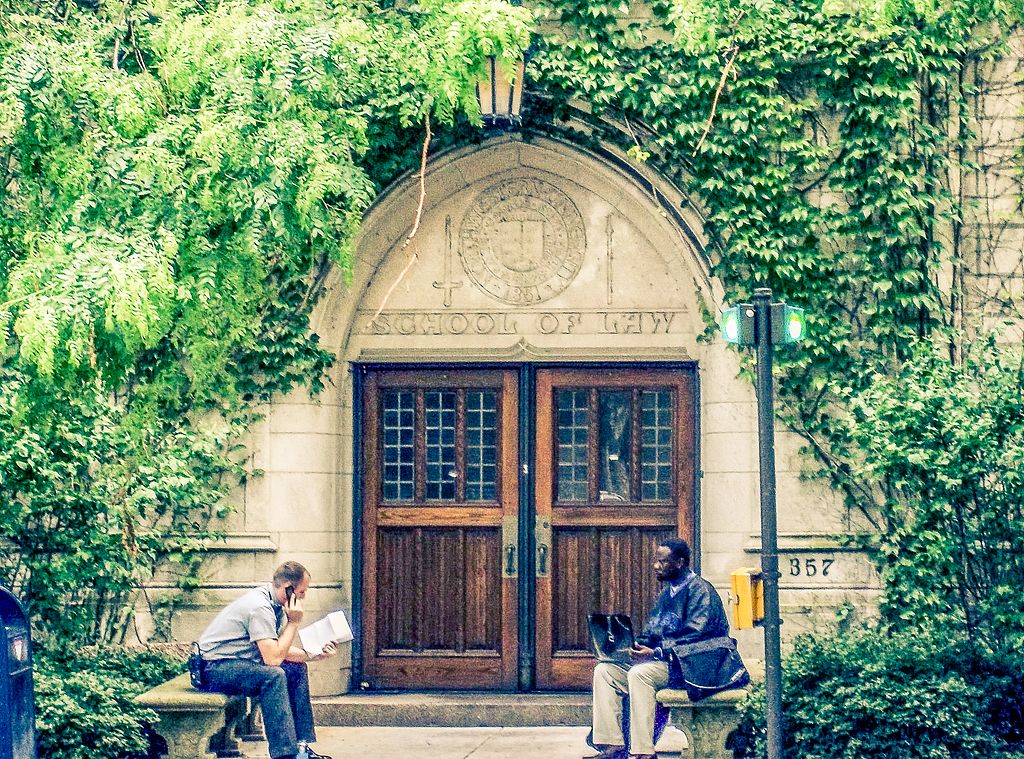
Chapman University is a private research university in California (USA), established in 1861; its motto is “ὀ Χριστòς καì ἡ Ἐκκλησíα”, meaning “Christ and the Church”, and it can be found in its logo.
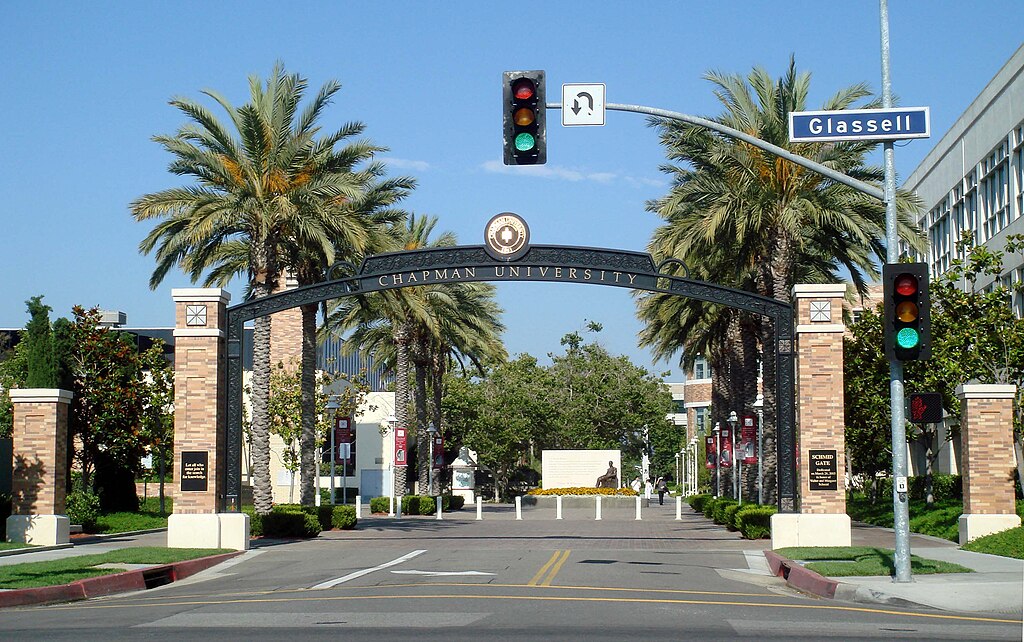
Public buildings
The Grand Pump Room is a historic building in the Abbey Church Yard in Bath (UK), a city famous for its hot springs. It is adjacent to the Roman Baths and is named for water that is pumped into the room from the baths’ hot springs. An inscription on the buildings reads ΑΡΙΣΤΟΝ ΜΕΝ ΥΔΩΡ, «Water is best» taken from the first Pythian ode of the Ancient Greek lyric poet Pindar, composed in 470 BC in honor of the Sicilian tyrant Hieron.
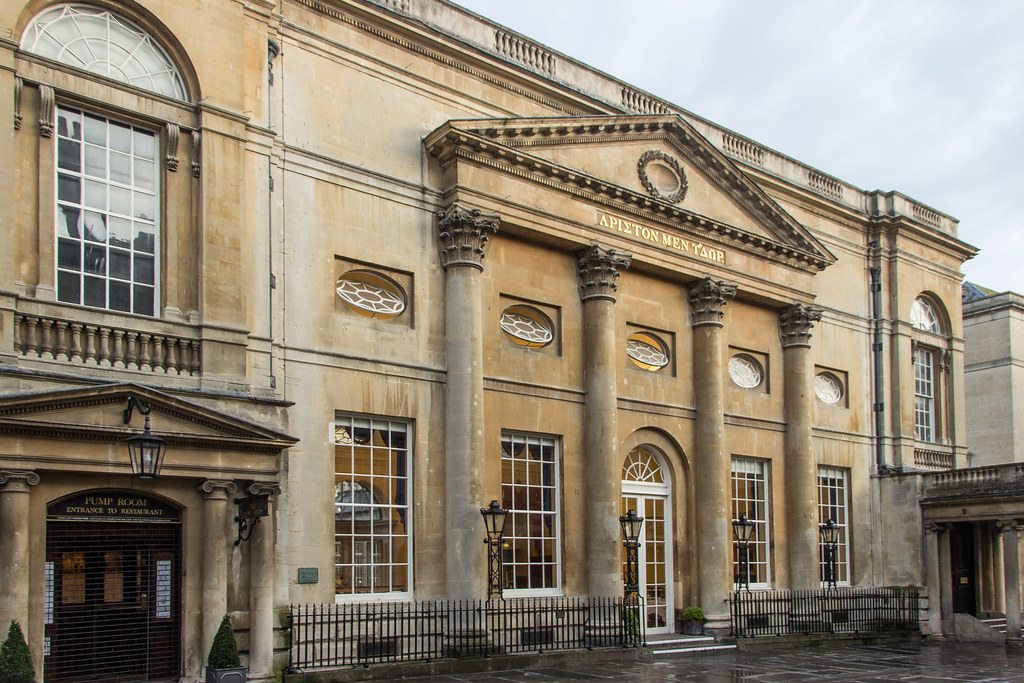
The same inscription is found at the Roman Baths in the same city.
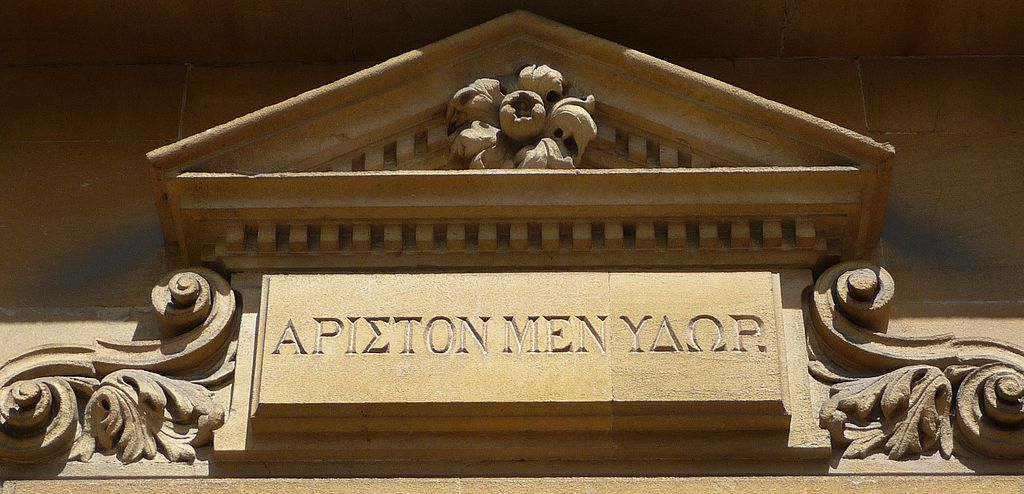
The Eiserner Steg (Iron Footbridge) is a pedestrian bridge spanning the river Main in the city of Frankfurt (Germany). Blown up in World War II, it was rebuilt in 1946 and then fully renovated in 1993. One of the two towers of the bridge bears the inscription ΠΛΕΩΝ ΕΠΙ ΟΙΝΟΠΑ ΠΟΝΤΟΝ ΕΠ ΑΛΛΟΘΡΟΟΥΣ ΑΝΘΡΩΠΟΥΣ which means “sailing over the wine-dark sea to men of strange speech”, taken from Homer’s Odyssey, Book 1, line 178.
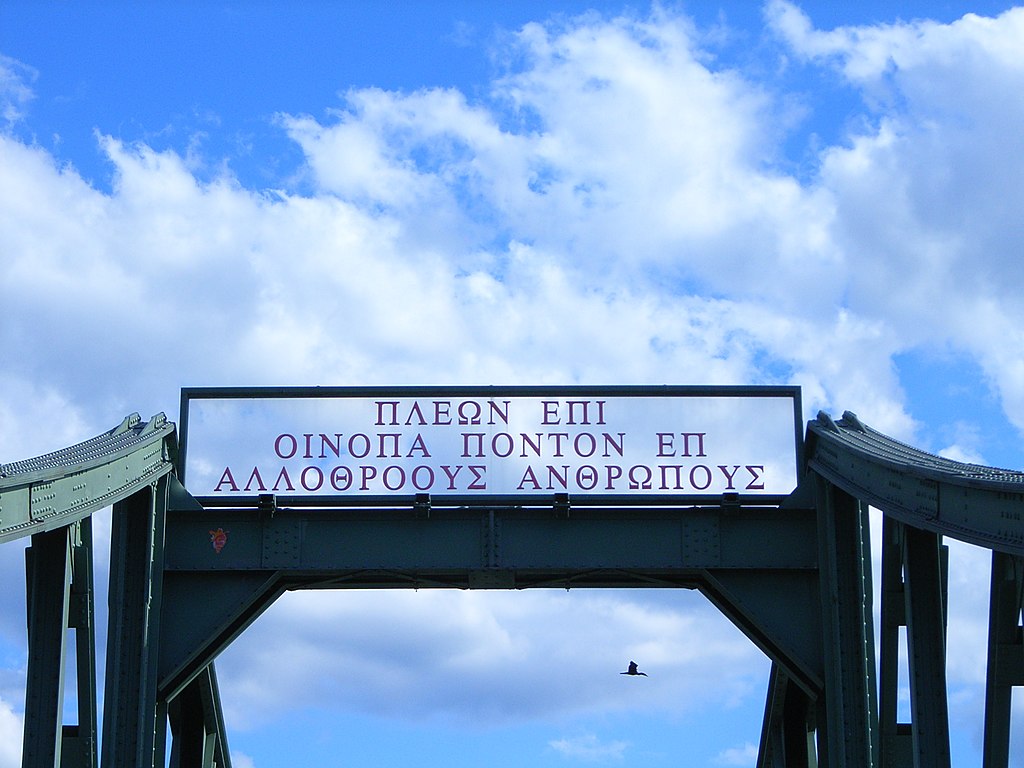
Alexandria, the second largest city in Egypt and the largest city on the Mediterranean coast, was founded around 331 BC by Alexander the Great, and was for many years a major intellectual and cultural center of the Hellenistic period. It hence carries an important Hellenistic Greek legacy, evidenced in its very name (even its Arab name is Al Iskandariyah means city of Alexander the Great). The toll gate of Alexandria for the Cairo–Alexandria Desert Road bears is built in a Grecian style, bearing inscriptions of the city’s name in Greek and Arabic.
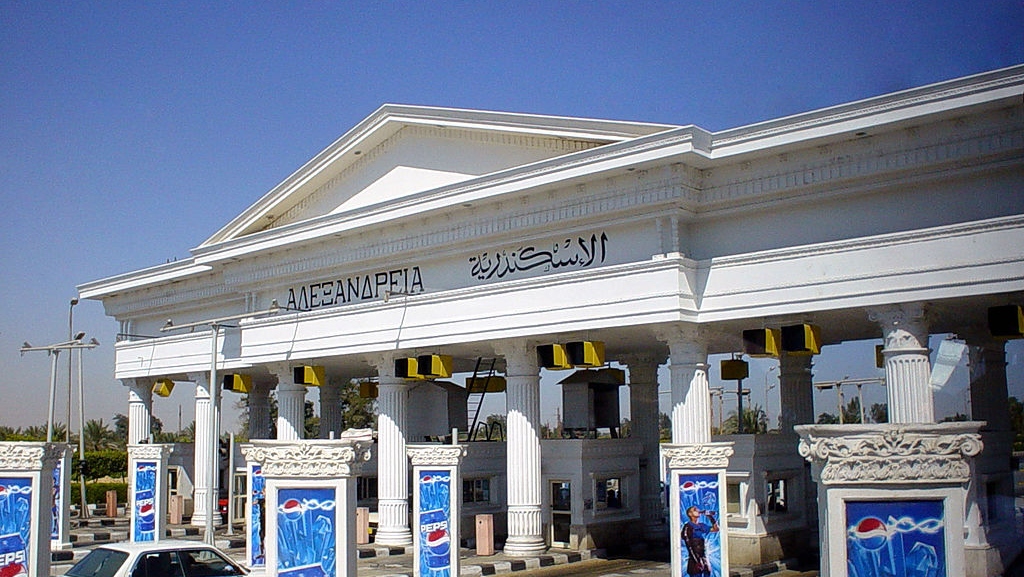
The Frans Hals Museum in the city of Haarlem (the Netherlands) was founded in 1862, known as the Art Museum of Haarlem. The lintel of one of the gates of the building bears the inscription ᾿ΕΚ ΜΟΥΣᾹΝ ἈΓΑΘῸΝ ΚΛΈΟΣ, taken from a line from Theocritus’ Idyll XVI, also known as “The Graces”: “᾿Εκ Μοισᾶν ἀγαθὸν κλέος ἔρχεται ἀνθρώποισι” meaning “From the Muses does good fame come to men”.
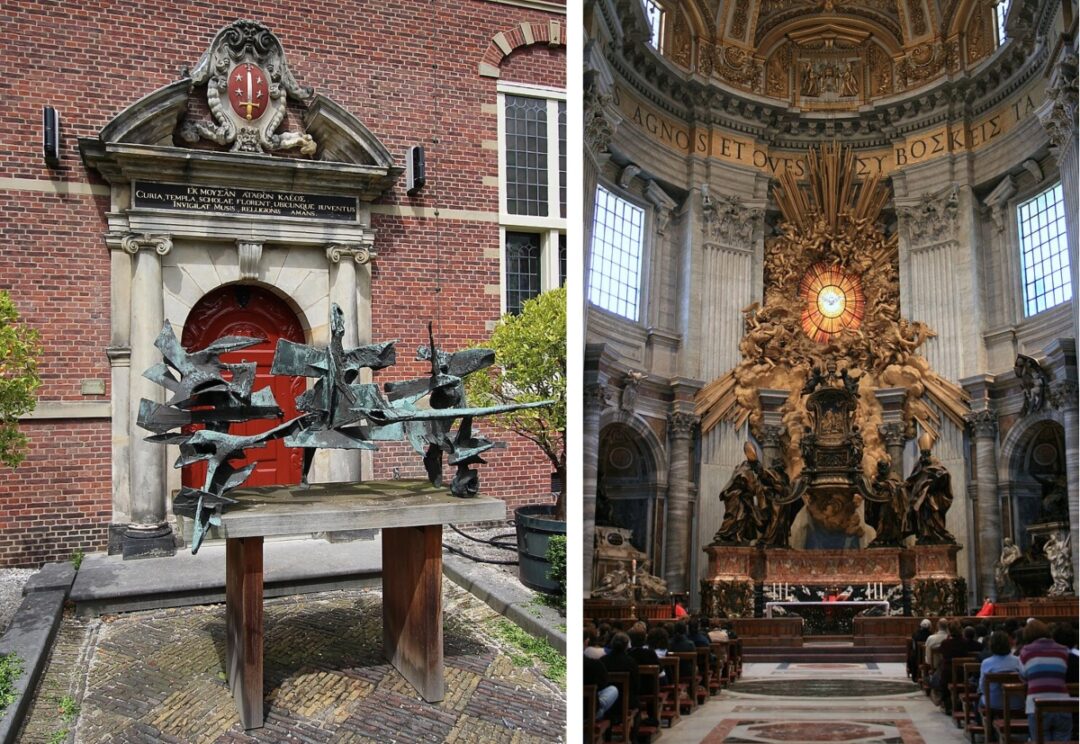
Given that the New Testament was written in Greek, Greek inscriptions can generally often be found in a religious context. To present but one of many examples: in St. Peter’s Basilica in Vatican City, on the golden background of the frieze above the Chair of Saint Peter, is the Latin inscription: “O Pastor Ecclesiae, tu omnes Christi pascis agnos et oves” (‘O Shepherd of the Church, you feed all Christ’s lambs and sheep’). On the right is a writing in Greek, ΣΥ ΒΟΣΚΕΙΣ ΤΑ ΑΡΝΙΑ, ΣΥ ΠΟΙΜΑΙΝΕΙΣ ΤΑ ΠΡΟΒΑΤΙΑ ΧΡΙΣΤΟΥ, with the similar meaning “You graze the lambs, you shepherd the sheep of Christ”.
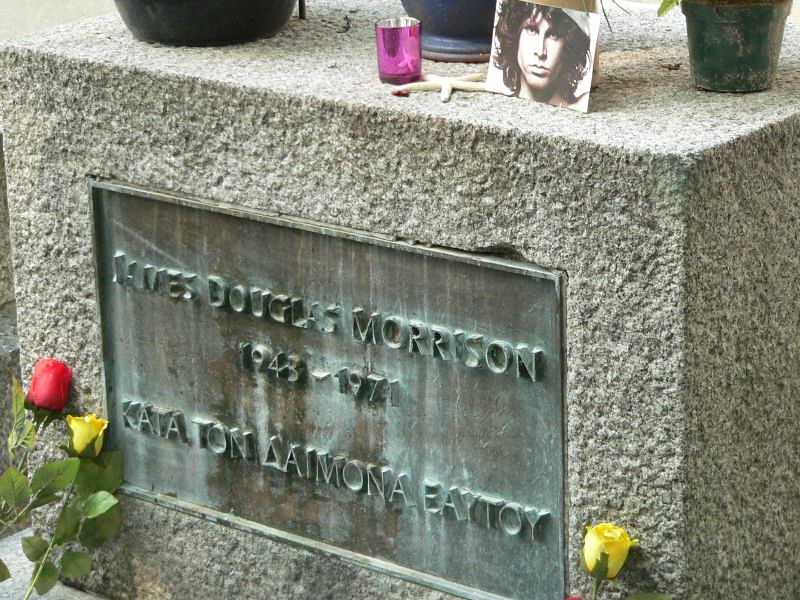
Finally, an example of a site that doesn’t exactly fit the description of a public building, but is nevertheless visited by hundreds of thousands each year: Jim Morrison’s grave at the Père Lachaise Cemetery in Paris (France). Morrison was buried there after his sudden death in Paris in 1971. In 1990, following a consultation with E. Nicholas Genovese, Professor of Classics and Humanities, San Diego State University, the rock star’s father placed a bronze plaque on the grave, with the epitaph ΚΑΤΑ ΤΟΝ ΔΑΙΜΟΝΑ ΕΑΥΤΟΥ, usually translated as “true to his own spirit” (in ancient Greek religion a daimon was a lesser deity or guiding spirit).
N.M.
Based in part on an article which appeared on Griechenland Aktuell (Intro image)
Read also via Greek News Agenda: Beyond Socrates – Greek philosophers you might not know; “Common words you (probably) didn’t know were Greek – Part 1; Part 2; Part 3; Part 4; USA city names of Greek origin – Part 1; Part 2
TAGS: HERITAGE

